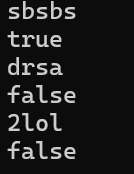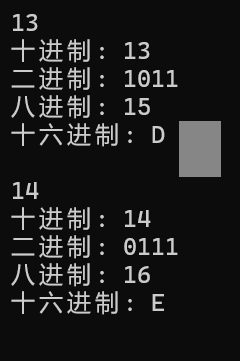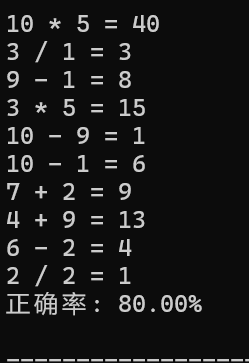实验一
task1.cpp
点击查看代码
#include <iostream>
#include <string>
#include <vector>
#include <algorithm>
using namespace std;
template<typename T>
void output(const T &c);
void test1();
void test2();
void test3();
int main()
{
cout<<"测试1:\n";
test1();
cout<<"测试2:\n";
test2();
cout<<"测试3:\n";
test3();
return 0;
}
template<typename T>
void output(const T &c)
{
for (auto &i:c)
cout<<i<<" ";
cout<<endl;
}
void test1()
{
string s0{"0123456789"};
cout<<"s0="<<s0<<endl;
string s1{s0};
reverse(s1.begin(),s1.end());
cout<<"s1="<<s1<<endl;
string s2{s0};
reverse_copy(s0.begin(),s0.end(),s2.begin());
cout<<"s2="<<s2<<endl;
}
void test2()
{
vector<int> v0{2,0,4,9};
cout<<"v0:";
output(v0);
vector<int> v1{v0};
reverse(v1.begin(),v1.end());
cout<<"v1:";
output(v1);
vector<int> v2{v0};
reverse_copy(v0.begin(),v0.end(),v2.begin());
cout<<"v2:";
output(v2);
}
void test3() {
vector<int> v0{0, 1, 2, 3, 4, 5, 6, 7, 8, 9};
cout << "v0: ";
output(v0);
vector<int> v1{v0};
rotate(v1.begin(), v1.begin()+1, v1.end());
cout << "v1: ";
output(v1);
vector<int> v2{v0};
rotate(v2.begin(), v2.begin()+2, v2.end());
cout << "v2: ";
output(v2);
vector<int> v3{v0};
rotate(v3.begin(), v3.end()-1, v3.end());
cout << "v3: ";
output(v3);
vector<int> v4{v0};
rotate(v4.begin(), v4.end()-2, v4.end());
cout << "v4: ";
output(v4);
}

task2.cpp
点击查看代码
#include <iostream>
#include <vector>
#include <string>
#include <algorithm>
#include <numeric>
#include <iomanip>
using namespace std;
// 函数声明
// 模板函数声明
template<typename T>
void output(const T &c);
// 普通函数声明
int rand_int_100();
void test1();
void test2();
int main()
{
cout << "测试1: \n";
test1();
cout << "\n测试2: \n";
test2();
}
template <typename T>
void output(const T &c)
{
for(auto &i: c)
cout << i << " ";
cout << endl;
}
// 返回[0, 100]区间内的一个随机整数
int rand_int_100() {
return rand() % 101;
}
// 测试1
// 对容器类对象指定迭代器区间进行赋值、排序
void test1() {
vector<int> v0(10); // 创建一个动态数组对象v0, 对象大小为10
generate(v0.begin(), v0.end(), rand_int_100); // 产生[0, 100]之间的随机整数赋值给指定迭代器区间[v0.begin(), v0.end())内的每个数据项
cout << "v0: ";
output(v0);
vector<int> v1{v0};
sort(v1.begin(), v1.end()); // 对指定迭代器区间[v1.begin(), v1.end())内数据项进行升序排序
cout << "v1: ";
output(v1);
vector<int> v2{v0};
sort(v2.begin()+1, v2.end()-1); // 对指定迭代器区间[v1.begin()+1,v1.end()-1)内数据项进行升序排序
cout << "v2: ";
output(v2);
}
// 测试2
// 对容器类对象指定迭代器区间进行赋值、计算最大值/最小值/均值
void test2() {
vector<int> v0(10);
generate(v0.begin(), v0.end(), rand_int_100);
cout << "v0: ";
output(v0);
auto iter1 = min_element(v0.begin(), v0.end());
cout << "最小值: " << *iter1 << endl;
auto iter2 = max_element(v0.begin(), v0.end());
cout << "最大值: " << *iter2 << endl;
auto ans = minmax_element(v0.begin(), v0.end());
cout << "最小值: " << *(ans.first) << endl;
cout << "最大值: " << *(ans.second) << endl;
double avg1 = accumulate(v0.begin(), v0.end(), 0)/v0.size();
cout << "均值: " << fixed << setprecision(2) << avg1 << endl;
cout << endl;
}

task3.cpp
点击查看代码
#include <iostream>
#include <string>
#include <algorithm>
bool is_palindrome(std::string s);
int main() {
using namespace std;
string s;
while(cin >> s)// 多组输入,直到按下Ctrl+Z后结束测试
cout << boolalpha << is_palindrome(s) << endl;
}
bool is_palindrome(std::string s){
std::string s0{s};
reverse(s0.begin(),s0.end());
if(s==s0)
return true;
else
return false;
}

task4.cpp
点击查看代码
#include <iostream>
#include <string>
#include <algorithm>
using namespace std;
std::string dec2n(int x, int n = 2);
int main() {
int x;
while(cin >> x) {
cout << "十进制: " << x << endl;
cout << "二进制: " << dec2n(x) << endl;
cout << "八进制: " << dec2n(x, 8) << endl;
cout << "十六进制: " << dec2n(x, 16) << endl << endl;
}
}
string dec2n(int x,int n)
{
if (n==2)
{
string r;
while (x != 0) {
r += (x % 2 == 0 ? "0" : "1");
x /= 2;
}
return r;
}
else if(n==8)
{
string r;
string o[8]={"0","1","2","3","4","5","6","7"};
while (x != 0) {
r += o[x % 8];
x /= 8;
}
reverse(r.begin(),r.end());
return r;
}
else if(n==16)
{
string r;
string o[16]={"0","1","2","3","4","5","6","7","8","9","A","B","C","D","E","F"};
while (x != 0) {
r += o[x % 16];
x /= 16;
}
reverse(r.begin(),r.end());
return r;
}
}

task5.cpp
点击查看代码
#include <iostream>
#include <string>
#include <algorithm>
#include <vector>
#include <iomanip>
using namespace std;
int main() {
cout << " ";
vector<char> arr;
for(int i = 0;i < 26;i++){
cout << " ";
cout << char('a' + i);
arr.push_back(char('A' + i));
}
cout << endl;
for(int i = 1;i <= 26;i++){
cout << setw(2) << setfill(' ') << i;
rotate(arr.begin(),arr.begin() + 1,arr.end());
for(auto ele:arr){
cout << " ";
cout << ele;
}
cout << endl;
}
return 0;
}

task6.cpp
点击查看代码
#include <iostream>
#include <ctime>
#include <cstdlib>
#include<iomanip>
int main() {
srand(static_cast<unsigned int>(time(nullptr)));
int correctCount = 0;
for (int i = 0; i < 10; i++) {
int num1 = rand() % 10 + 1;
int num2 = rand() % 10 + 1;
int op = rand() % 4;
int result;
std::string operation;
if (op == 0) {
operation = " + ";
result = num1 + num2;
} else if (op == 1) {
if (num1 < num2) {
int temp = num1;
num1 = num2;
num2 = temp;
}
operation = " - ";
result = num1 - num2;
} else if (op == 2) {
operation = " * ";
result = num1 * num2;
} else {
if (num1 % num2!= 0) {
i--;
continue;
}
operation = " / ";
result = num1 / num2;
}
std::cout << num1 << operation << num2 << " = ";
int userAnswer;
std::cin >> userAnswer;
if (userAnswer == result) {
correctCount++;
}
}
double accuracy = static_cast<double>(correctCount) / 10 * 100;
std::cout << "正确率: " << std::fixed << std::setprecision(2) << accuracy << "%" << std::endl;
return 0;
}




